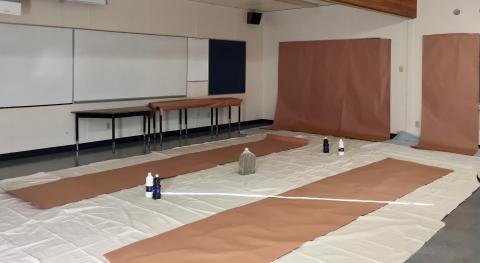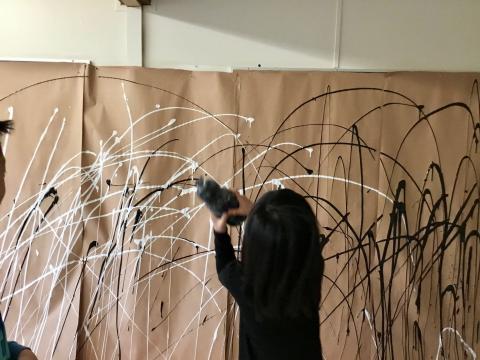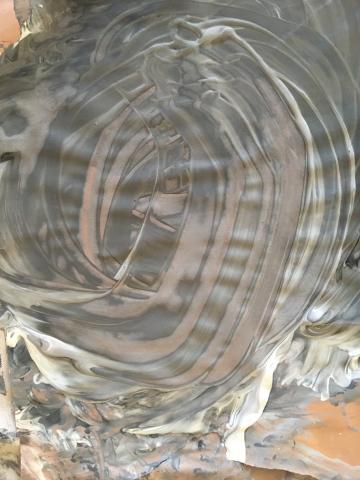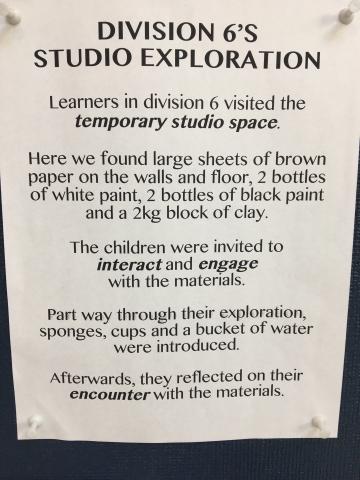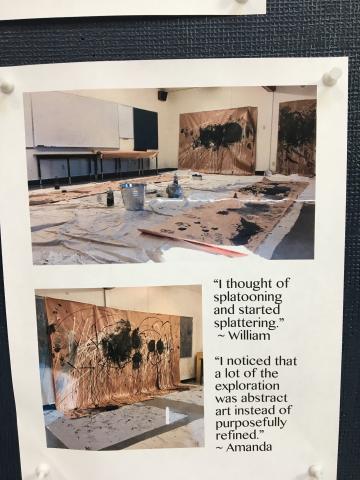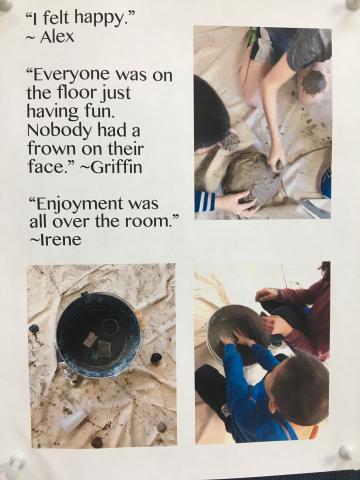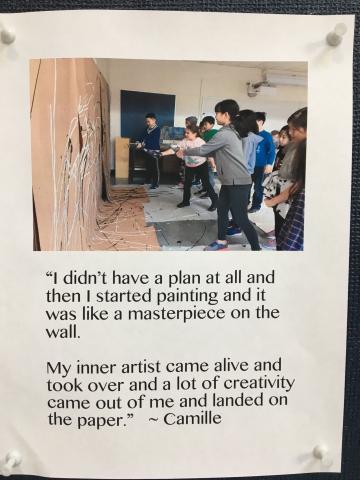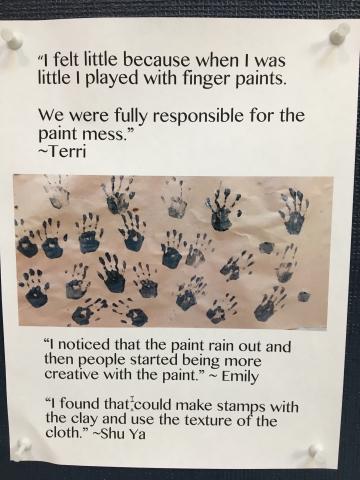Big Ideas Innovation Grant: Materiality
Big Ideas Innovation Grant Reflection
Inquiry Focus & Questions:
Inquiry Focus
How did we determine our focus and what are we learning from listening to our students?
Our focus has been determined by our professional learning journeys individually and collectively with playful inquiry and Reggio-inspired practices, nature immersion/outdoor classrooms, education for social justice and self-regulated learning. Our participation in the district’s Playful Inquiry study group and visits to the Opal School in Portland have inspired our interest in using different materials in the classroom. Additionally, over the years, our school has developed an outdoor classroom space where we have observed the children’s keen interest in and curiosity about the natural world and materials.
From listening to the children, we have noticed that the children have expressed enjoyment over using loose parts, natural materials and art materials to explore and communicate their thinking. The materials seem to encourage imaginative thinking and curiosity about the world around them while being accessible to all learners as a language for exploring, thinking, learning and sharing of ideas and perspectives. Furthermore, we have observed that there seems to be greater shifts in their thinking and a deeper understanding of conceptual knowledge through the use of these materials. Finally, we are also driven by our desire to promote other ways of knowing. We believe that the materials invite the children to socially construct knowledge with each other based on personal connections to their own lived experiences and to think metaphorically and through story.
What inquiry question(s) do we have?
How might exploring materiality deepen conceptual knowledge?
How might this lend itself to a deeper understanding of our connection to the land?
What might be common threads and differences between the early primary setting and intermediate setting?
What are you noticing that is making a difference for learners?
- The use of materials is bringing a lot of joy into learning.
- The children have enjoyed the sensory and corporeal experience of using their whole bodies to explore and use materials. They have also noticed that they feel peaceful and calm.
- Our learners are becoming more familiar with different materials and the possibilities that these materials afford. They are also more confident in choosing the materials that would help them express their thinking in a particular way. They are also getting to know themselves and their own learning styles.
- Materials encourage creativity and curiosity about the world around them.
- Materials allow for multiple entry points as a language for exploring, thinking, learning and sharing as they elicit ideas and perspectives through storytelling and metaphorical thinking. Many children feel successful as ideas and concepts are accessible to all learners.
- The ideas that have been elicited through materials are wider in variety, and show creative, deep and divergent thinking. The connections have been more authentic.
- The use of materials practices the idea that knowledge is relational.
- Materials invite children to socially construct knowledge with each other as they can make visible and share their personal connections and own lived experiences with each other in different ways.
- The Core Competencies come alive as children work with materials. We can especially see collaboration, teamwork and their identities and lived experiences reflected in their thinking.
- As teachers, we can help children make sense of materiality by asking them reflection questions that explicitly draws attention to what they noticed, wondered, felt and learned while using materials.
- As teachers, we can help children understand their skills elicited through the use of materials by explicitly asking them what Core Competencies were at work when they were using materials.
How do you know this is making a difference?
- Through class discussions and written reflections.
- In teacher observations of the children’s behavior and learning of concepts.
- Through reflecting on our documentation as teacher-researchers.
- Through noticing the children’s authentic connections linking the studio experience to experiences outside of the classroom.
- Through noticing the mindful and conscientious ways children have been interacting with the land.
